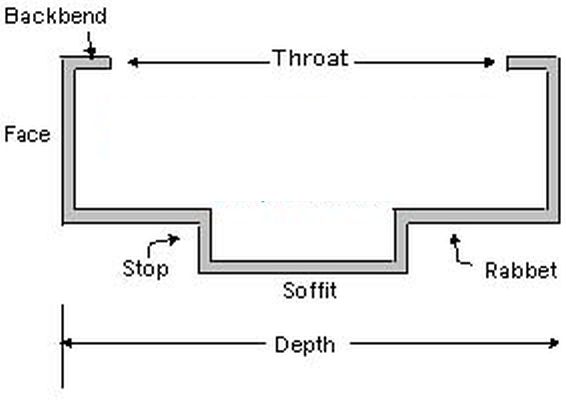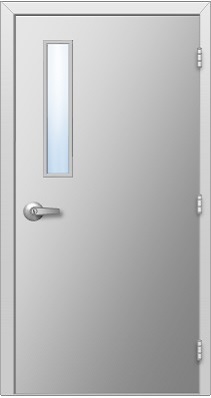Hollow metal doors and frames have become increasingly popular and economical. They are recognized by many in the industry as being more durable, vandal resistant, and longer lasting than wood or fiberglass doors. They are most widely used for exterior doors, particularly on commercial buildings, but are used inside buildings as well. Another reason for their popularity is their fire-resistance and fire ratings with some units able to achieve a 3 hour fire rating. Frames are specially made for installation within drywall or within masonry walls.

Hollow metal door frames typically come in 3 installation types:
Knockdown which are shipped in separate sections and assembled on the jobsite at miter joints with interior corner reinforcement and concealed tabs


Knockdown arc-welded, similar to previous but joints arc-welded and must be set before wall constructed

Butted flush at miter, spot welded, and ground smooth
Door frame anchors are typically required, three on each jamb, depending on the type of wall material adjacent:
-wood stud anchor

-Loose-T masonry anchor

-UL-Approved masonry anchor

-spacing bracket anchor (existing walls)

-steel channel stud anchor.

Hollow Metal Door Frames
Hollow metal door frames are most commonly made of 18, 16, or 14 gauge cold rolled steel and galvannealed steel. They are also produced in 16 or 14 gauge stainless steel. They typically come with factory prime paint coating for field painting.Frame depths can vary from 4-3/4″, 5-3/4″, 6-3/4″, 8-3/4″. Hollow frames commonly come mortised and reinforced to receive hinges, strike, and closer.


Frame section profiles vary slightly based on manufacturer but follow the same general concept:
Throat Opening – C-Channel section opening which wraps/straddles the wall.
Backbends – SLight lip that bends 90 degrees and terminates at the throat opening. Typically 7/16″-1/2″
Face – Width of frame visible when facing door head on, most commonly 2″
Stop – Protrusion dimension at the jamb, typically 5/8″, which stops the door from swinging past the jamb
Soffit – Stop width at the jamb seen when seen facing the jamb.
Rabbet – Dimension from the soffit to the door frame edg. Typically 1-9/16″ for 1-3/8″ thick doors. 1-15/16″ for 1-3/4″ thick doors. Frames may be single or double rabbeted.

Typically a gap of 1/16″ should exist between the throat and the finish wall material, referred to as a wrap around installation, leaving a joint which is typically caulked. Also a ‘butt-frame’ installation is done when one or both of the doors butt directly against a wall, where a 3/16″ gap should be left for caulk. Also a butt installation can exist where the wall width and frame depth are the same creating a flush condition where the door frame is butted up to the end of the drywall sandwiching edge beads. Hollow metal door frames can be grouted with mortar or plaster for added structural rigidity and increased fire resistance.

Hollow Metal Doors
Hollow metal doors are made from cold rolled steel and are furnished from the factory with a galvanized finish or prime painted (to resist rusting prior to painting). Door face sheets are typically constructed of 16 or 22 gauge steel which is bonded to a steel channel frame and reinforced with channels, honeycomb craft structure, or rigid plastic foam.

Rail-and-Stile and Rail Panel doors are available, but ‘flush’ doors with no visible seams are the most commonly used.


The standard nominal heights (same as frame opening) for hollow metal doors are 6′-8″, 7′, 7′-2″, 7′-10″, 8′. Standard clearance from door to frame is typically 1/8″ on jambs and header, and 3/4″ from the floor (varies based on flooring material). Standard nominal width usually range from 2′ to 4′ in 2″ increments. Different hollow metal door designs might consist of:
-Flush

-Full-Lite glass

-Vision window

-narrow lite

-full louvered

-vision/louvered

Fire-rated doors assemblies (resistant door, frame, and hardware – self-latching with closer) are required in fire walls. For a 3-hour rated door (UL Label A) no glass will be permitted, For 1-1/2 hour (UL label B) only 100 square inch of glazing is allowed per leaf (1/4″ wired glass).